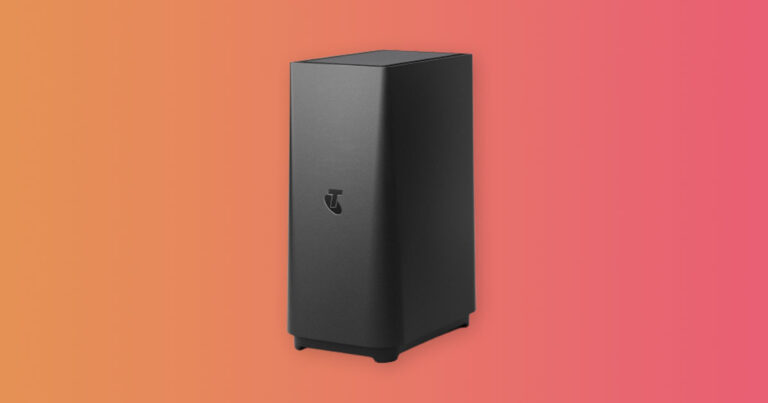Optus Mobile Review ALDI Mobile Review Amaysim Mobile Review Belong Mobile Review Circles.Life Review Vodafone Mobile Review Woolworths Mobile Review Felix Mobile Review Best iPhone Plans Best Family Mobile Plans Best Budget Smartphones Best Prepaid Plans Best SIM-Only Plans Best Plans For Kids And Teens Best Cheap Mobile Plans Telstra vs Optus Mobile Optus NBN Review Belong NBN Review Vodafone NBN Review Superloop NBN Review Aussie BB NBN Review iiNet NBN Review MyRepublic NBN Review TPG NBN Review Best NBN Satellite Plans Best NBN Alternatives Best NBN Providers Best Home Wireless Plans What is a Good NBN Speed? Test NBN Speed How to speed up your internet Optus vs Telstra Broadband ExpressVPN Review CyberGhost VPN Review NordVPN Review PureVPN Review Norton Secure VPN Review IPVanish VPN Review Windscribe VPN Review Hotspot Shield VPN Review Best cheap VPN services Best VPN for streaming Best VPNs for gaming What is a VPN? VPNs for ad-blocking You’ll need to sign up for a Telstra NBN plan to score one, though, so check out the daily updating list below of a handful of cheap Telstra NBN picks from our comparison engine. That said, even the oldest Telstra networking devices are modem-routers, meaning they’re built to work with all NBN technologies. The big difference is that the original Telstra Smart Modem added home phone support and WiFi booster capabilities for NBN connections, while the Gen 2 and Gen 3 Telstra Smart Modems offer optional Games Optimiser compatibility. Basically, whichever one you have, you’re working with a Telstra WiFi modem. Telstra also advises avoiding placing your Telstra Smart Modem inside cabinets or behind large objects but does advise placing it near a window for the best WiFi signal throughout your home. For people in Fibre-to-the-Premises (FTTP), Hybrid Fibre Coaxial (HFC) and Fibre-to-the-Curb (FTTC) homes, you’ll want to place the Telstra Smart Modem close enough to your NBN connection box to reach with an Ethernet cable. Those in Fibre-to-the-Node (FTTN) and Fibre-to-the-Building (FTTB) homes should place the Telstra Smart Modem within reach of an NBN wall outlet. After you’ve followed the Telstra Smart Modem connection steps below, connect the devices in your home via WiFi or Ethernet. There are four yellow LAN ports on the back of the Telstra Smart Modem for Ethernet-compatible devices, plus you can use the included red fridge magnet for the network name and password details for WiFi devices. If you do want to change the WiFi network name and password to something different, you’ll need to use different Telstra Smart Modem login details. Enter either http://telstra.gateway/ or http://10.0.0.138 into a web browser to sign in to the control panel. The username should be ‘admin’ and the password is ‘Telstra’ for older Telstra Smart Modems; for the Telstra Smart Modem Gen 3, it’s the same ‘admin’ username but the password is the same as the one on the bottom of the device. Telstra has a guide if you get stuck. Choose ‘WiFi’ from the top menu, then change the WiFi network name (SSID) and WiFi security fields to whatever you’d like. Hit ‘Apply’ to save the changes, then be sure to update those details on any WiFi devices you want to connect to your Telstra Smart Modem. FTTB and FTTC users should grab the grey telephone cable and plug one end into the NBN wall outlet and the other into the grey DSL port on the back of the Telstra Smart Modem. Don’t use any line filters between the Telstra Smart Modem and NBN wall outlet. Regardless of your NBN technology, now’s the time to power on the Telstra Smart Modem. Telstra estimates that it takes about 15 minutes for the Smart Modem to automatically update its software and get everything ready to connect to the internet. During this time, the Telstra Smart Modem light on the front will start out white to indicate it’s booting up, change to orange to show it’s connecting, then eventually settle on green to show it’s connected. It’s normal for the Telstra Smart Modem lights to alternate between white, orange and green during start-up. If you have any issues after half an hour, power off the Telstra Smart Modem for a minute, then turn it back on again and it should fix itself after rebooting. If not, reach out to Telstra NBN tech support. If you ever notice a blue light, it means your Telstra Smart Modem has switched to 4G backup, likely because there’s an NBN outage.
